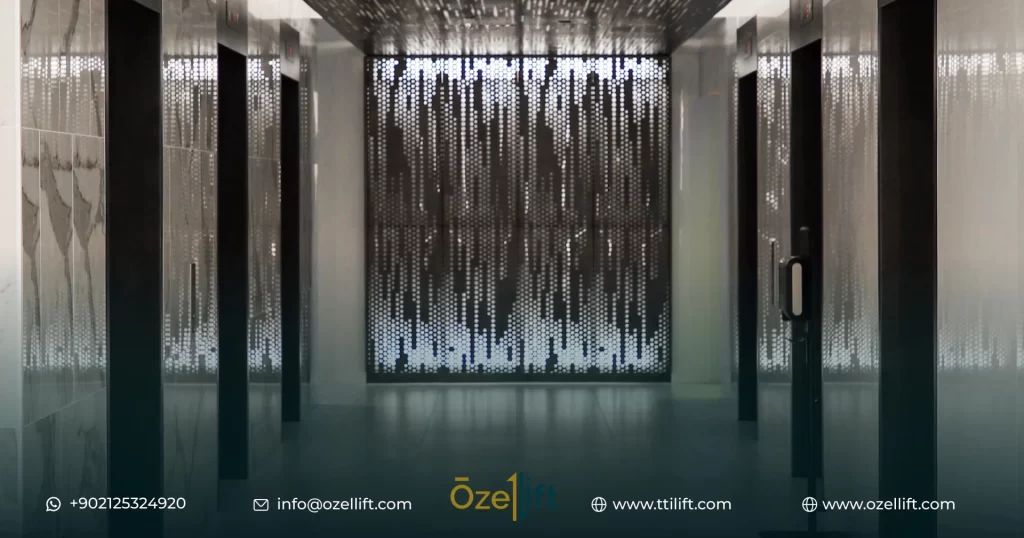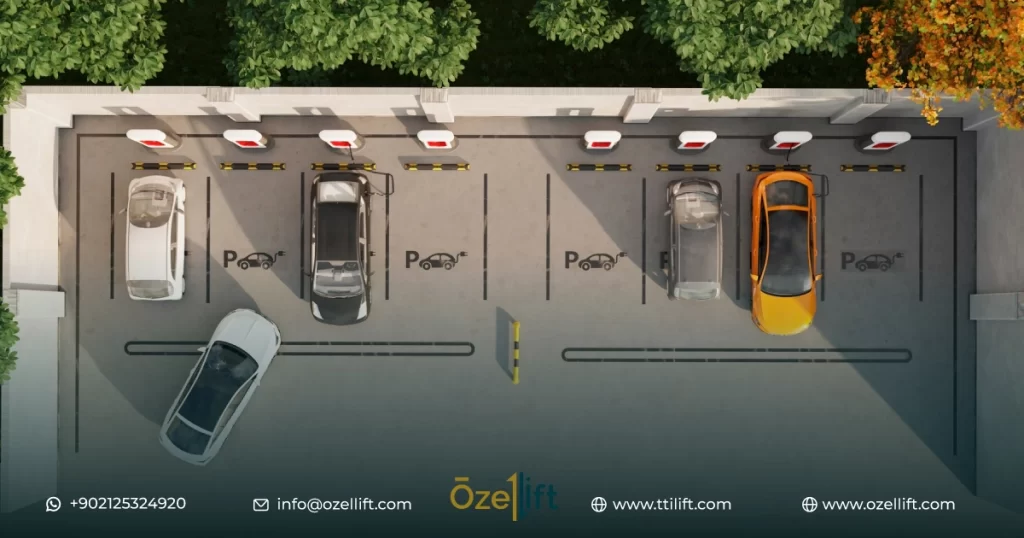What are the key differences between hydraulic and traction elevators?
Choosing the right elevator for your building is a crucial decision. Hydraulic and traction elevators are the two primary types. Understanding their differences (Hydraulic Elevator vs. Traction Elevator) in terms of operation, speed, efficiency, and maintenance is essential for making an informed choice.
This article delves into the key factors to consider when deciding between a hydraulic and traction
Hydraulic Elevators: Quiet Efficiency for Low-Rise Applications
Hydraulic elevators, often considered the workhorses of low-rise construction, operate on a simple yet effective principle. They utilize a piston housed within a cylinder, resembling a giant syringe. As a powerful electric pump pushes hydraulic fluid into the cylinder, the piston rises, lifting the elevator cabin along a vertical guide rail system.
Advantages of Hydraulic Elevators:
- Smooth and Quiet Operation: Hydraulic elevators are renowned for their gentle, near-silent operation. This makes them ideal for noise-sensitive environments like hospitals, libraries, residential buildings, and even luxury apartments. The absence of belts and pulleys, found in traction elevators, contributes significantly to reduced noise levels.
- Energy Efficiency: Compared to traction elevators, hydraulic systems offer remarkable energy efficiency, especially during idle periods. While both types utilize electricity during operation, the nature of hydraulic operation minimizes energy consumption when the elevator is not actively moving. This translates to lower operational costs in the long run.
- Cost-Effective Installation: Hydraulic elevators often boast lower upfront installation costs due to their simpler design and fewer moving parts. This can be a significant advantage for low-rise buildings with budget constraints.
Need a reliable elevator for your low-rise building? Call Ozellift today for a free consultation on our energy-efficient hydraulic elevators!
Limitations of Hydraulic Elevators:
- Limited Travel Height: The primary limitation of hydraulic elevators lies in their travel height capabilities. The maximum travel distance is generally restricted due to the limitations of the hydraulic cylinder and the pressure it can produce. This makes them unsuitable for high-rise buildings, where traction elevators excel.
- Machine Room Requirement: Unlike traction elevators, hydraulic systems require a dedicated machine room to house the pump and other essential components. This can be problematic in buildings with limited space as it reduces available square footage.
- Environmental Concerns: Traditionally, hydraulic elevators utilized petroleum-based hydraulic fluids, raising environmental concerns regarding potential leaks and contamination. However, advancements in technology have introduced eco-friendly, biodegradable alternatives that mitigate these environmental risks.
Know more about
traction elevator vs hydraulic elevator – Traction Elevators
Traction elevators, often seen soaring to new heights in modern skyscrapers, employ a fundamentally different approach. These systems utilize a continuous loop of steel ropes or belts that travel around a drive wheel (sheave). An electric motor drives the wheel, creating friction that pulls the ropes, hoisting the elevator car along vertical guide rails.
Advantages of Traction Elevators:
- High Speed and Long Travel Distances: Traction elevators excel in reaching impressive heights and achieving high speeds. This makes them the preferred choice for skyscrapers and high-rise buildings where efficiency and rapid movement are critical. Their ability to transport passengers quickly over long distances contributes to enhanced building functionality and user experience.
- Smoother Ride: Modern traction elevators, particularly geared traction types, offer a remarkably smooth and comfortable ride experience. This is achieved by the continuous loop system and advanced control technology that minimizes jerking and vibration during movement.
- Flexibility in Design: Traction elevators offer greater design flexibility compared to their hydraulic counterparts. They can utilize a dedicated machine room, a machine roomless (MRL) design that integrates components within the elevator shaft, or even a machine room located at the top of the shaft. This adaptability allows them to better integrate into diverse architectural plans and space constraints.
Experience the smoothest, fastest ride for your high-rise building. Ozellift offers superior traction elevator technology. Call for a free quote!
Limitations of Traction Elevators:
- Higher Upfront Cost: Due to their complex machinery and robust construction, traction elevators typically have a higher upfront cost than their hydraulic counterparts. This can be a significant factor for projects with tight budgets, especially in low-rise applications.
- Operational Noise: Although advancements have reduced operational noise levels, traction elevators still tend to be noisier than hydraulic systems. This can be a drawback in noise-sensitive environments, although the level of perceived noise may vary depending on the specific technology and design employed.
- Higher Maintenance Costs: While both systems require regular maintenance, traction elevators, with their complex machinery, have slightly higher maintenance costs compared to hydraulic elevators. However, proper maintenance ensures optimal functionality and passenger safety for both types.
Know more about
passenger elevator capacity
Parking pallet system
Hydraulic Elevator vs. Traction – Choosing the Right
ElevatorSelecting the right elevator ultimately depends on your specific project requirements and priorities. Here are some key factors to consider:
- Go for a hydraulic elevator for low-rise buildings (under 6 floors) with fewer stops and occasional heavy loads.
- Choose a traction elevator for high-rise buildings, frequent use, and a smoother, faster ride.
Ultimately, consulting a professional elevator company will help you determine the best fit for your specific needs and constraints.
Conclusion
In conclusion, the choice between a hydraulic elevator and a traction elevator ultimately depends on factors such as building height, budget, and noise considerations. Both types have their own advantages and disadvantages, so it’s important to weigh these factors carefully before making a decision.
Whether you opt for the smooth and energy-efficient operation of a hydraulic elevator or the high speed and tall travel capabilities of a traction elevator, make sure to consider all aspects to choose the right elevator for your building.
Looking for a cost-effective elevator solution for your cargo transport? Ozellift’s hydraulic elevators provide exceptional load-bearing capacity. Get a quote today!
What is the disadvantage of a hydraulic elevator?
Hydraulic elevators may have a lower lifting capacity compared to traction elevators, making them less suitable for very tall buildings.
What is the difference between a hydraulic lift and a normal lift?
Hydraulic lifts operate using fluid pressure, while “normal lifts” typically refer to cable-driven elevators that use a motor, cables, and a pulley system.
Are hydraulic elevators safer?
Hydraulic elevators are generally safe with proper maintenance and adherence to safety standards. Modern hydraulic elevators include safety features, but rescues can be more challenging in case of malfunctions compared to traction elevators. Regular maintenance is crucial for safety.



